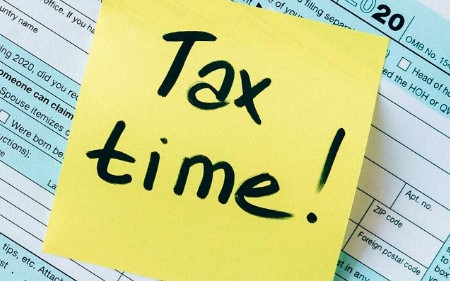Investor's Guide. Savings on taxes.

Visitors: 993
With the end of 2022 comes the opportunity to take steps to potentially reduce the amount of income tax you have to pay for the year. With inflation constantly rising, as well as rising interest rates and the cost of living, there are more and more incentives to try to save as much of your hard-earned money as possible.
Although your income from work or investments is now expected to remain as it is, you can make a number of deals or agreements that will keep the money in your pocket rather than in the taxman's pocket. Here's a list of year-end tax planning tips based on reports published by KPMG Canada and CIB and RBC.
Consider capital gains or losses
There are several possible measures of capital gains, such as stocks, mutual funds and the value of potential bond holdings. If you received capital gains by selling these assets this year or in the previous three years, consider selling the securities in your portfolio that are making losses now to generate a capital loss that can be used to eliminate the gains received in 2022.
Any additional losses can be applied to an earlier period to reduce gains from 2019 through 2021, resulting in a retroactive refund of taxes paid on those gains. Capital losses not used to offset previously realized gains could be deferred indefinitely or carried forward. Alternatively, consider deferring the sale of securities that on paper are generating profits until the new year, thereby deferring the reporting of capital gains until the 2023 tax return, if it is advantageous in terms of tax savings.
Check out the latest TFSA rules
You can contribute up to $6,000 to a TFSA in 2022, in addition to unused contributions you accumulated in previous years. Although these contributions are not tax-deductible, income and gains on the account are tax-free, and withdrawals are not tax-deductible.
If you've never opened a TFSA and were 18 or older when the program began in 2009, your total contributions this year are $81,500, less any amounts you've contributed in the past. Your contribution room also includes any amounts withdrawn from your account, as you have the right to replace amounts previously withdrawn.
If you withdrew funds from your TFSA in 2022, you must wait until at least early 2023 to re-contribute that amount. So if you're thinking about taking advantage of your TFSA savings, it would be wise to do so before the end of the year. If you delay that withdrawal until early 2023, you won't be able to replace the amount of that withdrawal until early 2024.
In 2023, the annual TFSA contribution limit will increase to $6,500 (due to inflation), which means the lifetime contribution limit will increase to $88,000, assuming you reached contribution age in 2009 and have not yet used a TFSA.
Consider an early withdrawal from your RRSP
The deadline to contribute to a tax-deductible registered retirement savings plan for 2022 is March 1, 2023, which is 60 days after the end of the tax year. The dollar limit on contributions for 2022 is $29,210, or 18% of your earned income in 2021. However, the earlier you contribute, the faster your tax-deferred savings will accumulate. The annual contribution limit to the RRSP will increase to $30,780 in 2023.
Although most people wait until retirement to start withdrawing money from their RRSPs, or, at the latest, until the year they turn 71, when the retirement fund is due to close, it may make sense to make early withdrawals in a low-income year. This means that withdrawals will be taxed at a lower rate at a time when your income will be higher. In this case, you should withdraw the money before the end of the year so that it will be taxed at the lowest rate in 2022. Remember, however, that if you do so, you will lose the tax-deferred option on that money.
The last year of RRSP contributions
If you turn 71 this year, if you can, consider contributing as much as you can to your retirement fund before the year ends and your RRSP eligibility expires. For example, you can do the following:
Make your deductible contribution for 2022 by December 31. The March 1 deadline does not apply to you. This amount should include as much of your remaining RRSP contribution space as possible.
Contribute $2,000 more than your total limit. (You are allowed to exceed your contribution amount by $2,000 before the penalty applies).
If you are still working, consider making an additional contribution to the above amounts that will be deducted in 2022. The rule states that the year you turn 71 is the last year you are allowed to put money into an RRSP. Depending on what income you receive in 2022 (which will affect your limit for 2023), this will create an additional contribution opportunity of up to $30,780 for 2023. That amount will be tax deductible in 2023, provided you contribute that amount by the end of the year. This will temporarily create an overpayment situation in December, but a penalty of 1% of the overpayment per month will be a small price to pay for getting a solid tax deduction on your 2023 tax return.
Remember, you can continue to receive deductions for contributions made to your spouse's RRSP until the end of the year in which he or she turns 71.
We have compiled for you a list of unscrupulous brokers, , with reviews on which you can find on our website.


Comments 0